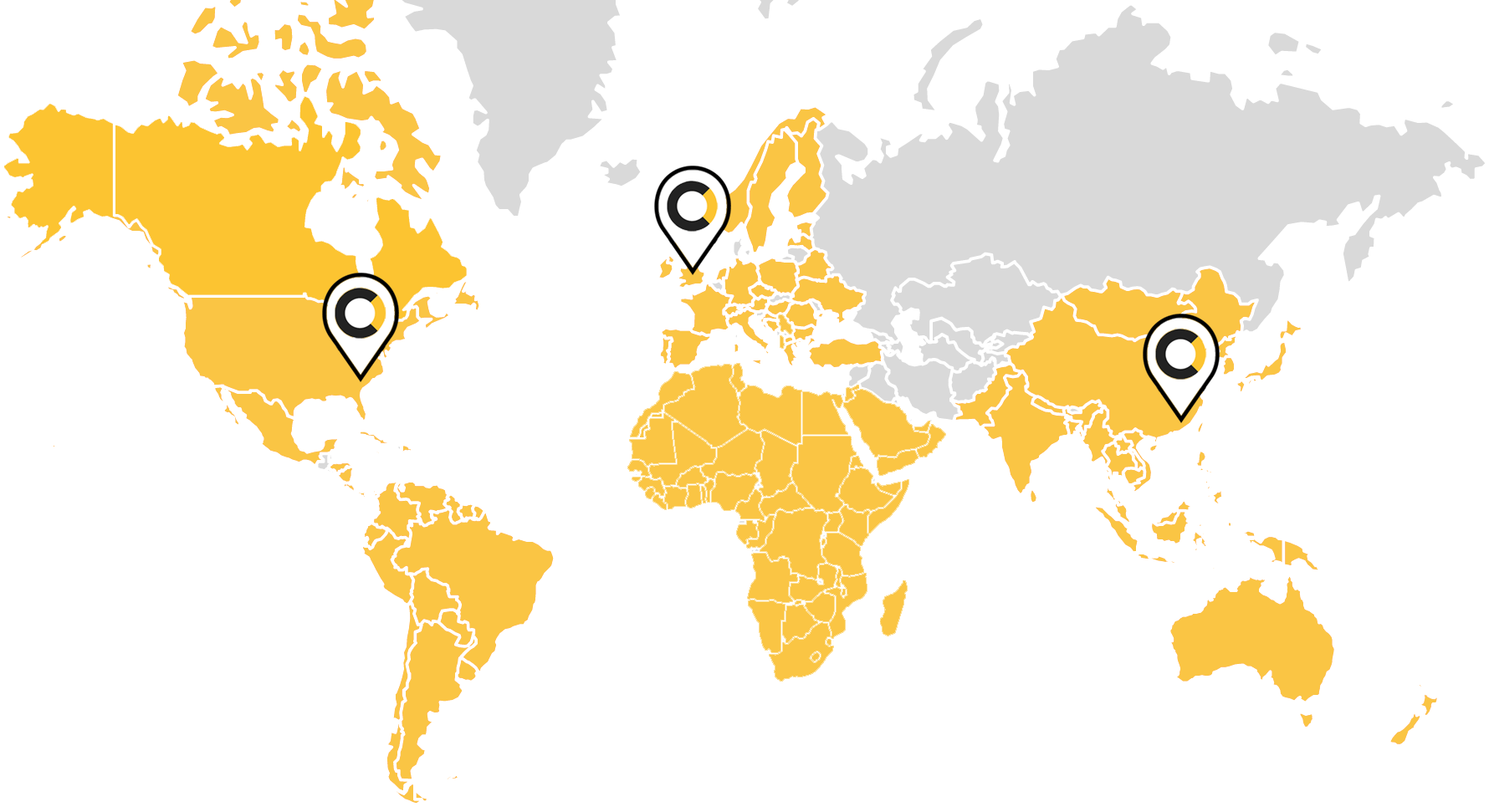How to choose smart
lock technology
A step-by-step buyers guide to choosing smart locks for
your equipment.
Smart locks are commonplace in our homes and the buildings we frequent.
Yet, when it comes to industrial locking and equipment access control, your options can seem limited.
Equally, there's not enough accessible information to help guide you. That doesn’t have to be the case.
This buyers guide answers these two questions:
- What are the common problems standing in your way of building the technology you want?
- How to solve those problems and build a smarter locking system that gives you data you can audit, controls access, offers security and integrates with your other technology.
What Problems are standing in your way?
-
Mechanical locks are limiting, and they no longer serve you
You want to upgrade the mechanical locks you’re using to electronic, but don’t know where to start.
Rolling out across your business feels like a big undertaking.
-
Security
Visible locks are often the attack point for break ins. Upgrading or changing security levels is not a simple process.
-
Lack of data and communication
You can track and audit every area of your business, except access to your machines.
Having locks that aren’t able to provide data or communicate with other machine elements presents a problem e.g. security breaches only being discovered after the fact, leaving no indication of the source.
-
Lack of access control
An inability to easily grant or revoke access leads to long operational steps that may not always result in a simple fix and the cost of fixing an offline, mechanical system like losing a master key, can be expensive.
-
Key management and associated expenses.
Managing keys can be time consuming and costly when they need to be replaced.
Especially when you must replace the lock and the keys, to prevent future unauthorised access.
-
Supply chain
Once you've decided on the locks you want, securing reliable fulfilment is the next hurdle.
Advancements in locking hardware and access control place connected, smart locks as a value-adding piece of IoT technology and a solution to these problems.
Mechanical Locks
Problem: Mechanical locking acts as an island - unconnected and unable to communicate with your machine.
Solution: Smart locks that integrate with other elements, such as alarms or sensors to enhance your machine’s ecosystem.
Your locking system can be much more than a method of keeping the door closed. It can be security, peace of mind, data gathering and more, remote control.
There’s no one size fits all when it comes to locking. While your options may seem limited, they aren’t.
You can choose off-the-shelf electronic locks, build standalone systems with smart locks and compatible controllers, or create custom, integrated solutions that work with your existing software, telemetry or payment systems, and peripherals.
Whatever your locking needs, there is a solution.

Security
Problem: Visible attack point and a lack of information on asset security
Solution: Upgrade to concealed smart locking with door monitoring, providing visibility on the state of your lock and the door.
Lock picking and break-ins are unfortunately common in outdoor unmanned cabinets, such as vending machines and utility cabinets. Therefore, removing the visible attack point can be an easy prevention method. Concealing the lock also protects it from the elements, reducing the need for IP ratings.
Incorporating lock monitoring provides an additional security feature, as well as visibility on the security of your assets. If you wish to add further deterrents - along with enhancing your machine - you can integrate your locking system with sensors and alarms.
Lack of data
Problem: The only area of your business not collecting data is the locking system
Solution: An easy way to gain locking data is to add lock and/or door monitoring.
This is the simplest way to start gathering basic access information. If you want to scale this and gather a complete profile of access data, look to an electronic locking system that connects with your existing software. One of the benefits of a fully connected system is it will do the hard work for you, so you can easily manage and audit the data. You could even look to integrate with your inventory management system.
How would real time lock and door states improve your business operations?
Enjoying this article?
Access control
Problem: Lack of control and knowledge over access, as well as costly key management.
Solution: Incorporate an access control system in order to grant access remotely, as well as see who has access, when and how.
Access Control lifts the burden of expensive physical key management, by utilising digital keys that can be authorised or revoked instantly, as well as remotely.
Control who, when and how your applications are accessed.
Integrating access control with other peripherals, such as telemetry systems can further enhance the lock and functions of the overall system.
What if you could have full visibility of machine access, as well as maintenance data, showing exactly who has opened your locks, when, where and for how long?
Integrations
Problem: Locks are unable communicate with other machine elements
Solution: Smart locking has the capability to not only communicate but also work in conjunction with other, existing technology.
Smart locking isn’t just Bluetooth-enabled locks; with the right integrations it can elevate any application.
By cleverly utilising incorporated I/O ports you can enhance your locking systems to communicate with other system peripherals. These could be sensors, alarms, or lights. Anything you need to work seamlessly with the door opening and closing can be incorporated.
Supply Chain
Problem: Extremely long lead times affect your own supply and customer delivery dates.
Solution: Look for suppliers who can plan fulfilment around your delivery location and required frequency, hold components and buffer stock quantities, just in case.
The type of smart locks you choose is irrelevant if stock doesn't show up on time, when you need it. When vetting a supplier, look for someone who can demonstrate expertise in complete supply chain management. This will help keep lead times to a minimum as they will likely use multiple sources.
The next element to question is their supply chain: where are products made and assembled?
Do they use more than one location with the ability to ship directly from the best location for your preferred delivery hub?
If you can't or don't want to take a year's worth of stock, do they offer stock holding, set delivery schedules and buffer stock quantities in case of unforeseen courier delays or events that may prevent you, and your customer, getting goods on time?

Need more support?
Use the contact form to ask us questions about what type of locking is right for you.
Like this article?
Let us know what you thought on Linkedin
Sign up to our newsletter for more content like this!